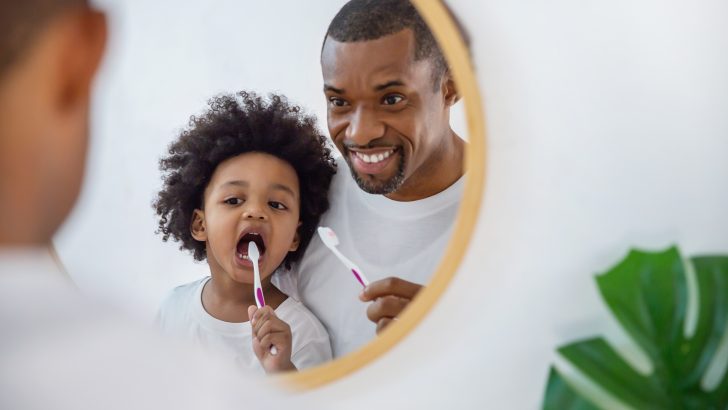As your little one grows up, you must learn how to brush toddler teeth.
But as soon as your baby’s first tooth erupts, it’s time to start brushing.
Sure, you won’t be doing any brushwork until their teeth start coming in, but you still have to keep your baby’s gums clean. So, maintaining oral hygiene starts from a very early age.
If you’re wondering when exactly: the earlier, the better.
It’s not difficult, but there’s some finesse to it. Takes a little bit of know-how. The thing is, the methods you use are going to change over time until your child can do it by themselves.
Knowing when, how, and why is key – especially if this is your first time parenting. That’s why we’re here to help you get through the stages.
Let’s start from the beginning.
How to Care For Your Baby’s Gums
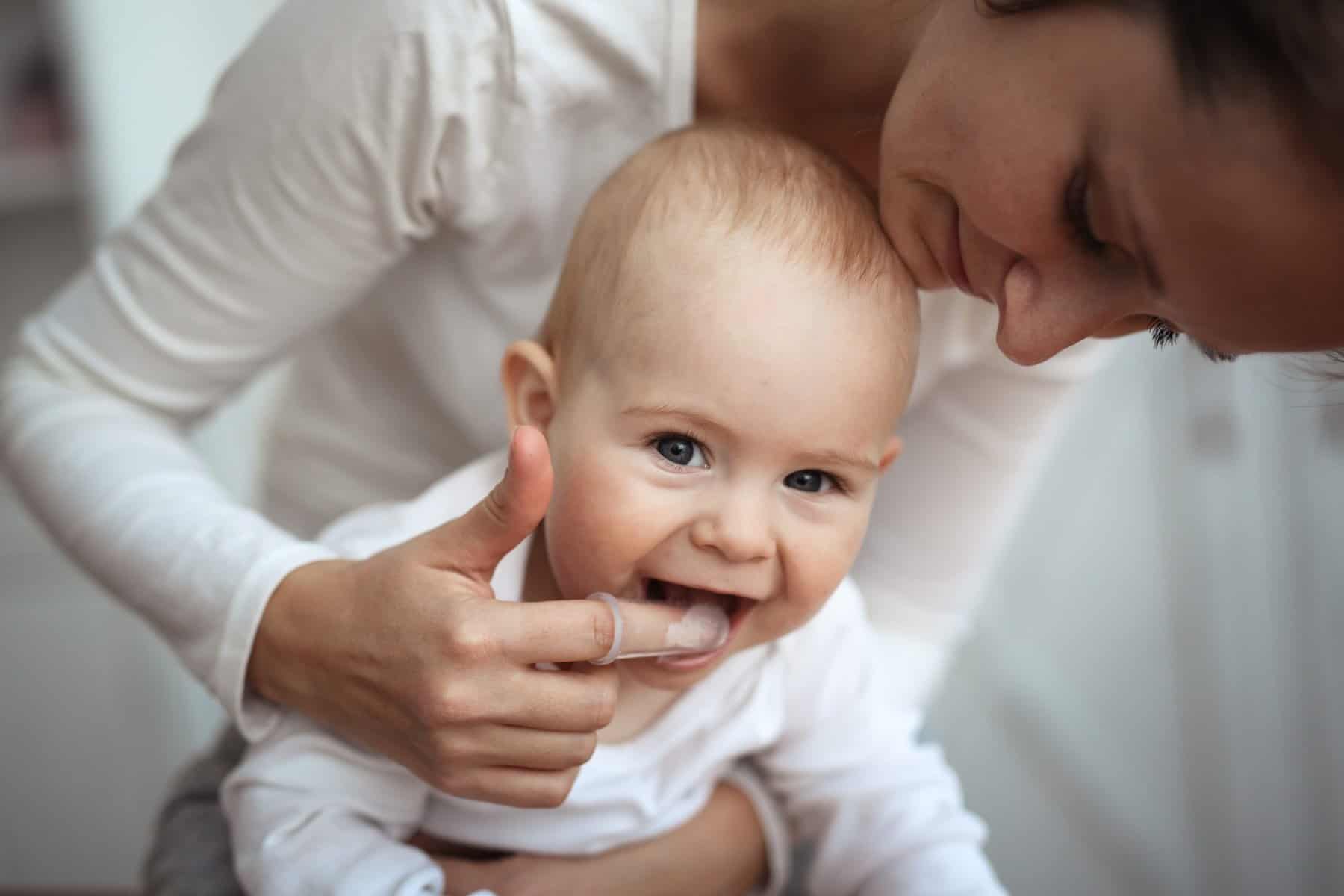
Before your baby’s teeth start to show, it’s a good idea to look after your baby’s gums. Doing this helps you form healthy oral habits right from the get-go.
Right now, you don’t need a baby toothbrush or toothpaste. Instead, you can just use a clean, damp washcloth to clean your baby’s gums. Make sure to do this once every day. The point of this is to clean saliva and bacteria.
But another benefit of cleaning your baby’s gums is the fact that it prepares them for future brushing. Just make sure to be very gentle since their soft tissue is sensitive.
Don’t apply too much pressure. Be thorough, but don’t overdo it. Keep doing this until your baby’s teeth start to show. Then, break out the toothbrush.
Brushing Your Baby’s Teeth for the First Time
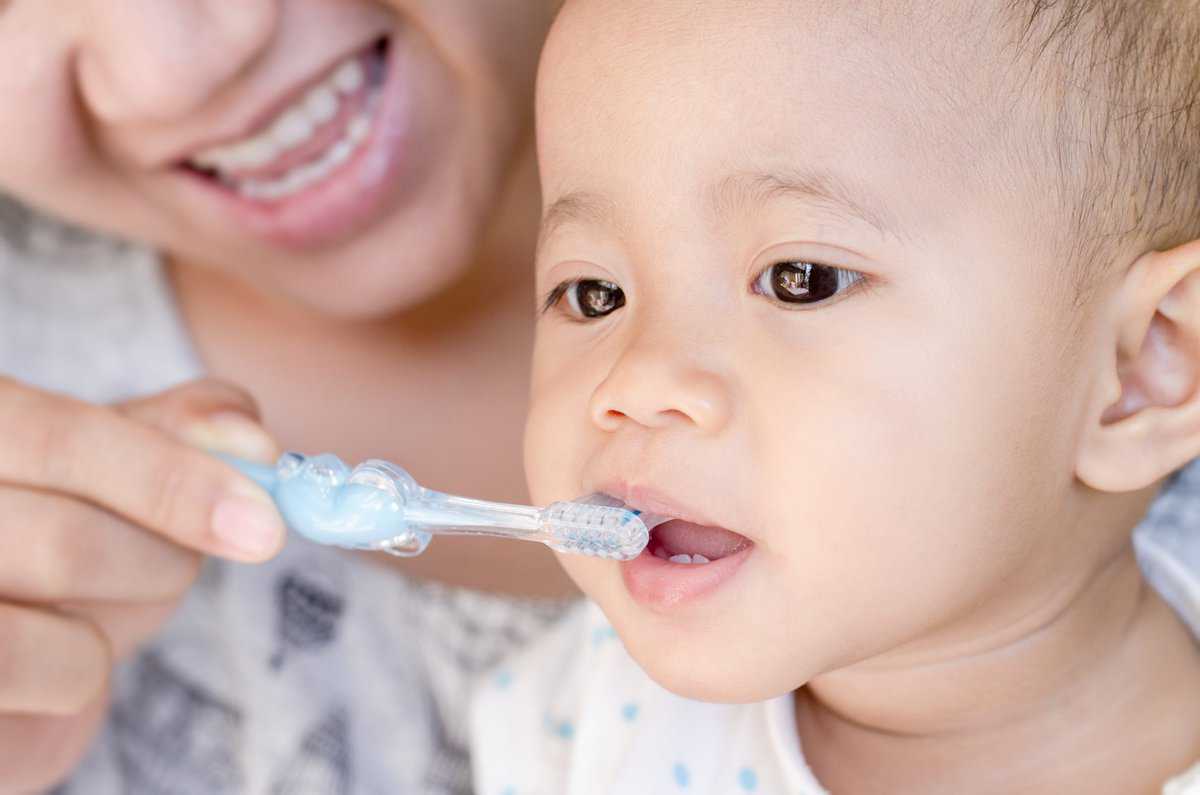
When your baby’s first tooth sees the light of day, the toothbrush makes its debut.
Don’t use just about any old toothbrush. You need a toothbrush specifically designed for young babies. These toothbrushes have a smaller head and are gentle and soft-bristled.
So, babies can get used to them very fast because of their softness. As soon as that first tooth crops up to say ‘hello’, start brushing it on a daily basis.
Just a pea-sized bit of toothpaste is enough to get the job done. In time, as your baby grows more and more teeth, you can up the amount in order to get adequate coverage.
Don’t expect your little one to spit out the toothpaste. Right now, that kind of finesse is way above their pay grade. Always have a clean cloth on hand to wipe away the excess.
But how often should you do it?
Is it different while they’re young, tiny, and cuddly?
No, not at all. Two times a day will suffice – but when, exactly?
Brush your little one’s tooth (or teeth) before bedtime. Be consistent about it. After the last feeding or breastfeeding session, take the time to brush your baby’s teeth properly.
For the second time – well, that’s up to you. Right now, your baby’s sleeping all the time, and feeding all the time, so it’s hard to say what time of day is ideal.
Fit it into your routine.
When you’re brushing for the first time – don’t panic. There’s really nothing scary about brushing your little one’s teeth.
Just don’t get caught off guard if your baby doesn’t like it. Stick to the plan. Keep it short. We’ll get into the details later. For now, be prepared for a possible bad reaction. Don’t worry. Eventually, your little one will get used to it.
When it comes to the actual brushing, be very gentle. There’s just that tip of a tooth when you’re brushing for the first time. There’s no reason to go all Picasso with the brushwork.
Brush in small circles, but be thorough.
If you’re unsure about the position, place your baby on your knee and tilt their head back. This is a special moment and a milestone – so don’t forget to include your partner.
It might feel awkward initially, but it’s not like driving a car.
You will get used to it pretty quickly. But don’t forget to make it fun. If you’re stressed out, your baby will likely be stressed out, too. Make it enjoyable for both of you.
Let’s lay out the groundwork with a summary:
- Use a baby toothbrush.
- A small drop of toothpaste is enough.
- Be gentle when brushing.
- Brush in circular movements.
- Brush twice a day.
- Stay calm; be consistent.
- Make it fun.
Dealing With a Teething Baby
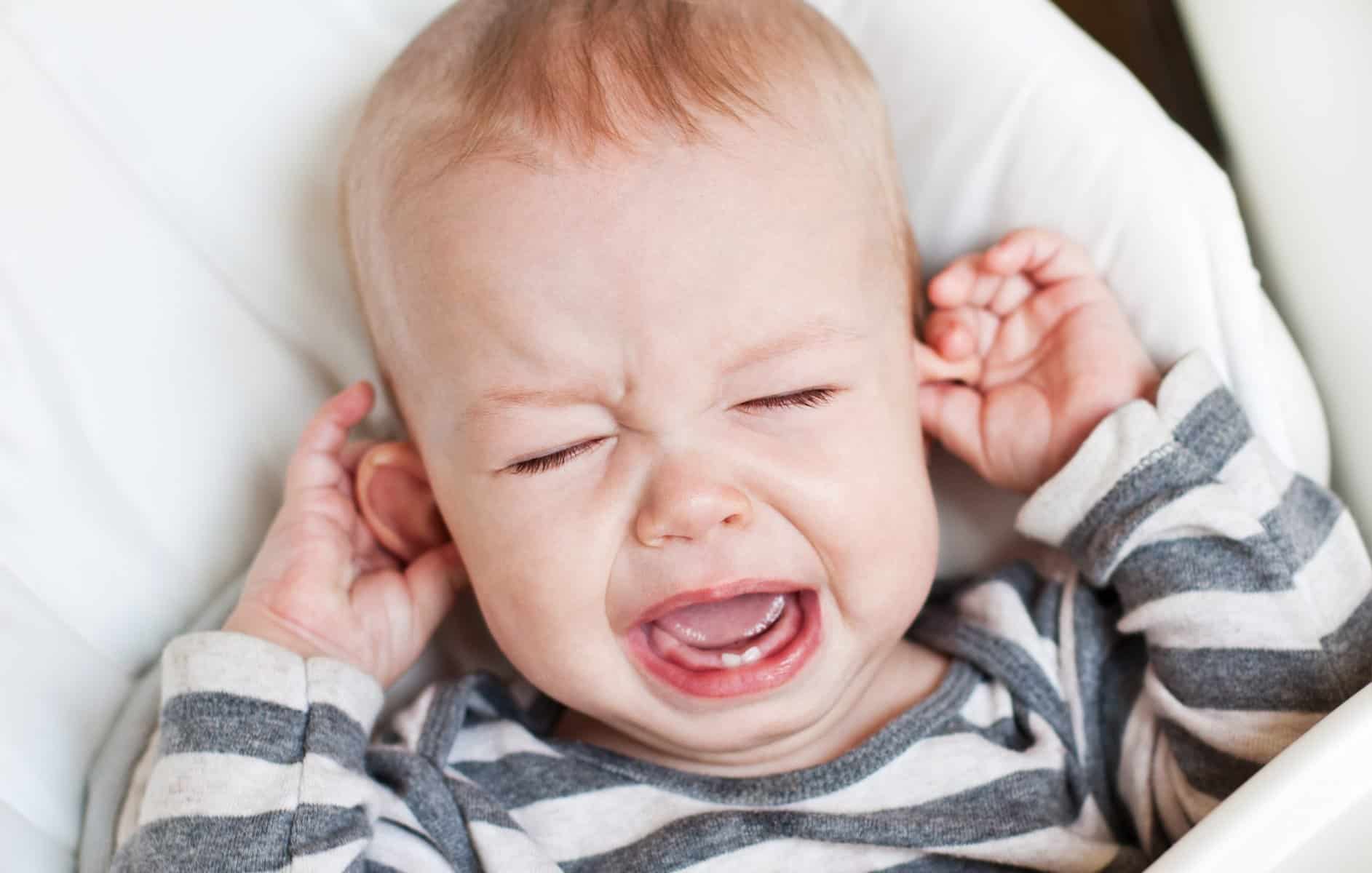
Now that you know when to start brushing baby teeth, we can’t just skip ahead to the point where you learn how to brush a toddler’s teeth. There’s a very challenging period in-between.
This period is a tough one to navigate – and it’s called teething. It tends to cause a lot of problems. Some teething babies won’t even sleep unless held.
There’s no way to say for sure when it’s going to happen. Some babies start teething as early as 3 to 4 months. Others – as late as 12 months. So, it’s different for every baby.
If anything, this period will be your greatest test of patience so far. Sometimes, teething may cause your baby to start grinding their teeth.
Every tooth can cause pain and discomfort for your little one. Yes, how long it lasts varies, but you can safely assume that teething lasts for about a week.
When your baby starts teething, that doesn’t mean no brushing. You’re still going to practice oral hygiene like before. But, you will take extra steps to soothe your baby.
Due to the symptoms of teething causing pain to your little one, it’s best to be extra gentle, even more so than before. Teething toys can also be used before brushing.
Remember that you shouldn’t stop cleaning your baby’s gums with a damp cloth after their first teeth kick in. That said, now you can massage their gums while you clean them. Massaging their gums is sure to help alleviate some of the pain.
So, stay patient and read up on how to comfort your baby during this time.
How to Brush Toddler Teeth

When your child becomes a toddler, you enter a whole new world of trouble.
With a toddler, brushing teeth is no longer as easy as it used to be. They tend to offer resistance. Not always, but it’s best to be prepared for it. What can you do about it?
Knowing how to brush toddler teeth is what every parent needs to know.
If you’ve maintained your baby’s oral health so far – you’ve done most of the heavy lifting. Doing the same routine consistently over the years saves you a lot of headaches. But kids still tend to be rebellious and often unpredictable.
In reality, nothing should change too much. But, if your toddler is suddenly fussy when you want to brush their teeth – there’s a variety of tips and tricks that can help you.
First of all, you want to make sure that you’re using an optimal toothbrush.
To ensure the best dental care for your little one – using a toddler-sized toothbrush is a must. The toothbrush you use should be soft-bristled and have a toddler-sized head.
You’re still going to keep using toddler-safe fluoride toothpaste.
If you’re all set – consider the position. A toddler is bigger than a baby and can stand on their own two feet. This gives you some options in regard to how you want to do it.
You can have your toddler either sit or stand. Experiment until you find a position that they’re totally comfortable with. The right position can lessen the chance of fussiness.
Don’t hesitate to get your partner involved if you’re having a hard time.
Next, apply a pea-sized amount of toothpaste and get to brushing. Brush with one hand, and use your free hand to either hold them close or to control their mouth as you brush.
When your toddler turns 3 years old, you can increase the amount of toothpaste you use.
So, how exactly do you brush?
It’s still very important to be gentle. Brush in small circles at a 45-degree angle.
For how long? Well, there’s no need to overdo it. Two minutes is fine.
If your child is 2 or 3 years old, they likely have the ability to spit out the toothpaste after you’re finished. Encourage it. Pretty soon, you will let your child brush their teeth alone.
When you’re brushing, do it right. That means brushing not only your toddler’s teeth but the inside of their cheeks, their tongue, and the roof of their mouth, too. Be thorough.
But what if you’re still finding it hard to get your little one to cooperate?
What to Do When Your Child Refuses
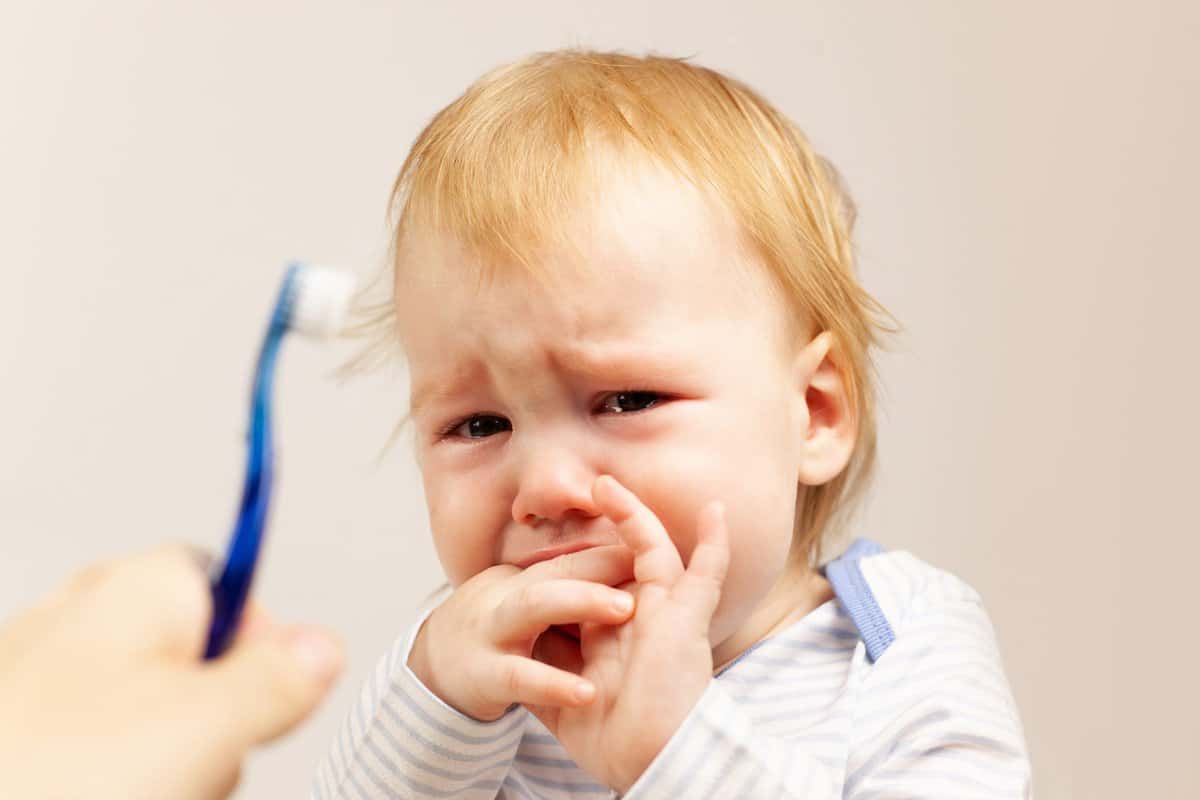
No need to smash the panic button right away.
Some children just don’t like having their teeth brushed – and that’s nothing to worry about. Sure, it’s a little inconvenient, but you’re not helpless. There’s much you can do.
So, how do you make brushing your toddler’s teeth a smooth, stress-free experience?
Check your approach first. Are you antsy, agitated, or frustrated? Your toddler mirrors your energy. If you’re calm, there’s a good chance that your little one will be calm, too.
Getting worked up about it is only going to make things worse.
There’s a popular method called the ‘knee to knee‘ technique that works great for many parents. But it takes two sets of hands. You’re going to have to get your partner involved.
Basically, you’re going to sit in front of your partner and place your child between the two of you. After that, position your baby by having them lie down with its head on your lap.
Then, work together to open your child’s mouth and brush their teeth gently.
This won’t work all the time. And, if your baby is crying or fussing – pressuring them is only going to make things worse. So, are there any alternatives that you can consider?
There are a few tips and tricks that work well. For example, you may find it easier to get your little rebel to cooperate if they’ve had enough exhausting activities during the day. A tired baby is more willing to have their teeth brushed.
If your child is giving you cues that brushing their teeth is causing them pain – stop at once. There could be an underlying health issue that’s making it unpleasant for them.
Does your child have sensory issues? If so, brushing their teeth is going to be almost impossible. If that’s the case, your best bet is to consult with a dentist on how to proceed.
Sometimes, it’s all about timing. If your child isn’t obliging, try again later. Be flexible. Be patient. And, above all else, be calm.
Your approach plays a huge part in how it goes down. But, if you want to learn how to brush toddler teeth, you’re also going to have to learn how to make it fun for your baby.
How to Make Brushing Teeth Fun
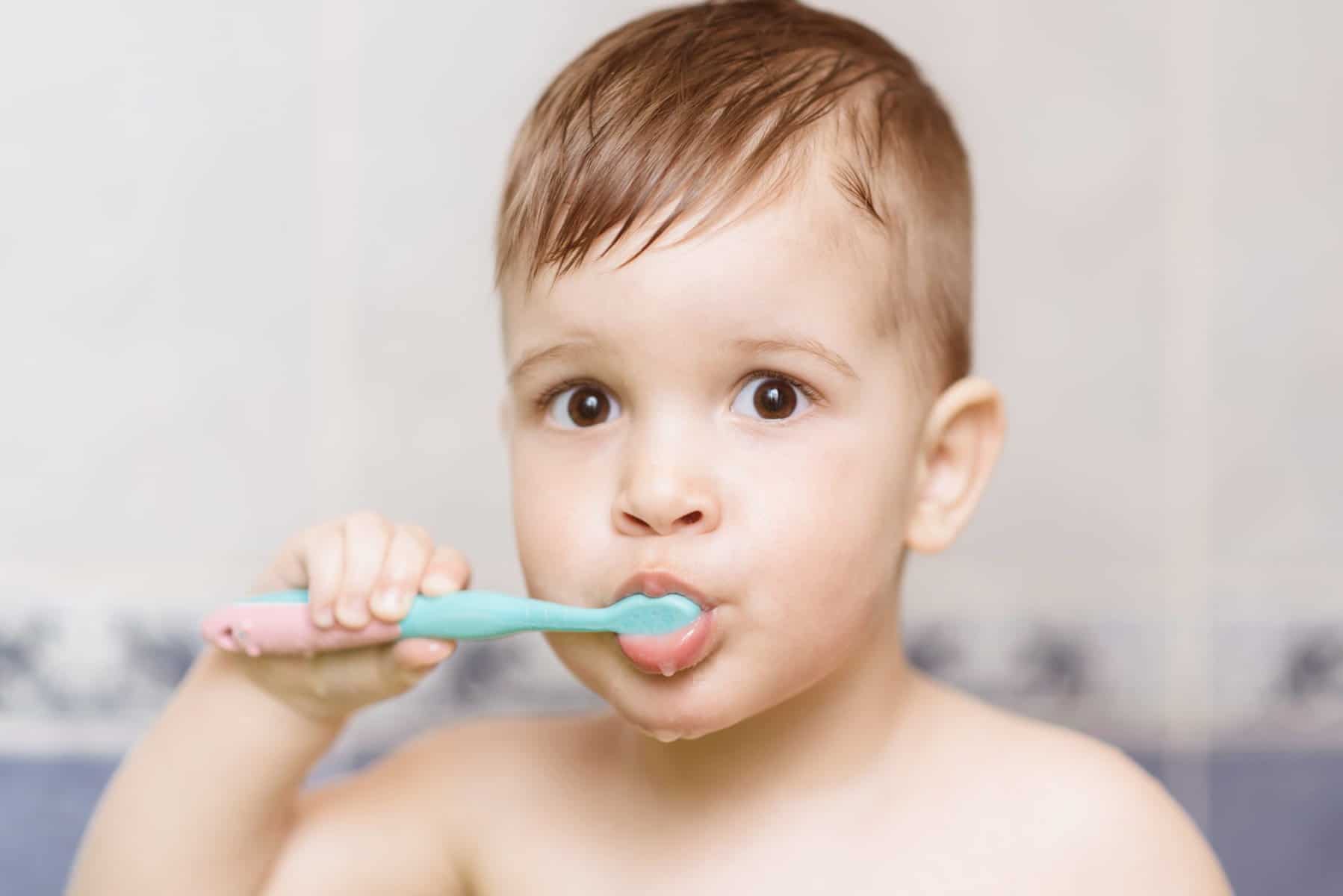
It’s not impossible to turn brushing teeth into a fun, joyful activity. If you manage to do this, your little one will be more cooperative in the future.
So, what tips do we have for you? Well, the first one is obvious, but it may have slipped your mind. Maybe you didn’t realize it, but talking to your baby is important.
About what?
Anything, really. Do you know how a dentist asks you questions to take your mind off the pain? It’s basically the same philosophy. Talking can serve as a distraction.
You can crack jokes, spin fun made-up tales, or outright make silly noises. You can even sing – and you’re encouraged to do so. Singing to your baby is sure to calm them down.
And, while we’re on the topic of singing, playing music has a positive effect, too.
A little dancing and singing can make brushing teeth a real breeze.
Another thing that may work well is handing your toddler their favorite toy to hold on to as you brush their teeth. A toy can help them relax and feel good about the situation.
Besides talking, singing, and toys – getting your partner involved helps, too.
The more, the merrier. Your toddler will surely enjoy being in the spotlight, even if they’re feeling particularly rebellious every time you try to brush their teeth.
Most children love being the center of attention.
Incorporating these tips and tricks into your routine is certain to help.
In Conclusion
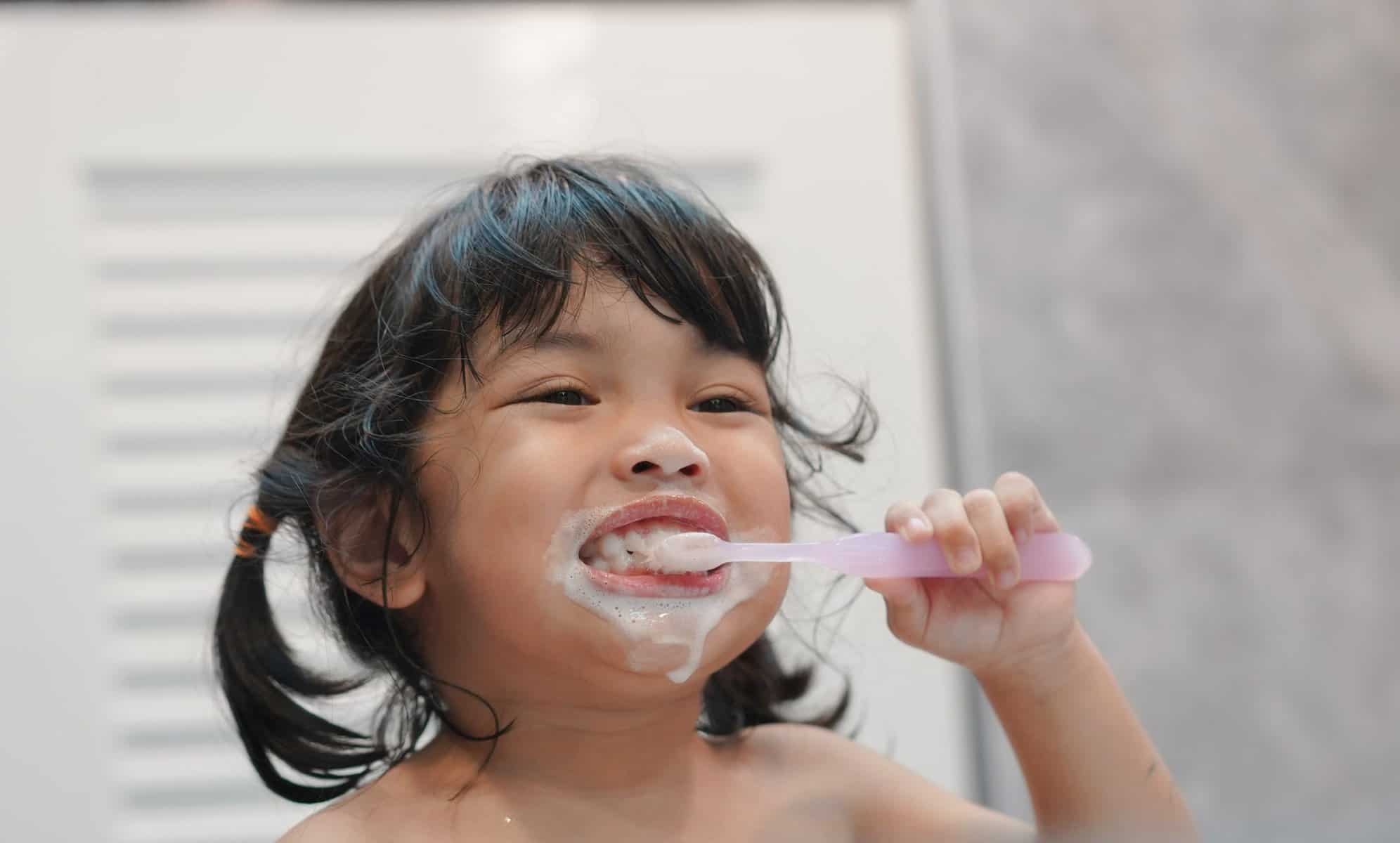
Knowing when to start brushing baby teeth and how to brush a toddler’s teeth is important to practice good dental care and ensure your child has healthy teeth and gums.
Stay in touch with your dentist. Children need to see the dentist often, just like adults. Doing so will allow you to spot any potential issues, such as tooth decay, and adjust.
Dental care starts early, and parents are tasked with brushing their toddler’s teeth. As time goes by, however, you will have to help them learn to do it alone.
You will be brushing your toddler’s teeth until they turn 3 years old. By that time, they can pick up a brush and do it independently, but your guidance is still necessary.
For example, you have to monitor their dental habits and encourage them. Be present. More obstacles await in the future, such as learning how to pull out a baby tooth. You may even notice tissue left behind after the tooth is pulled.
Don’t worry. It’s a learning process every step of the way.
So, be patient with yourself, just like you’re patient with your child.
Brushing a toddler’s teeth is sometimes difficult but never impossible. It just takes some effort, some cleverness, and the right attitude. As always, the trick is to make it fun.
With our tips and tricks, you’ll brush your toddler’s teeth quickly.
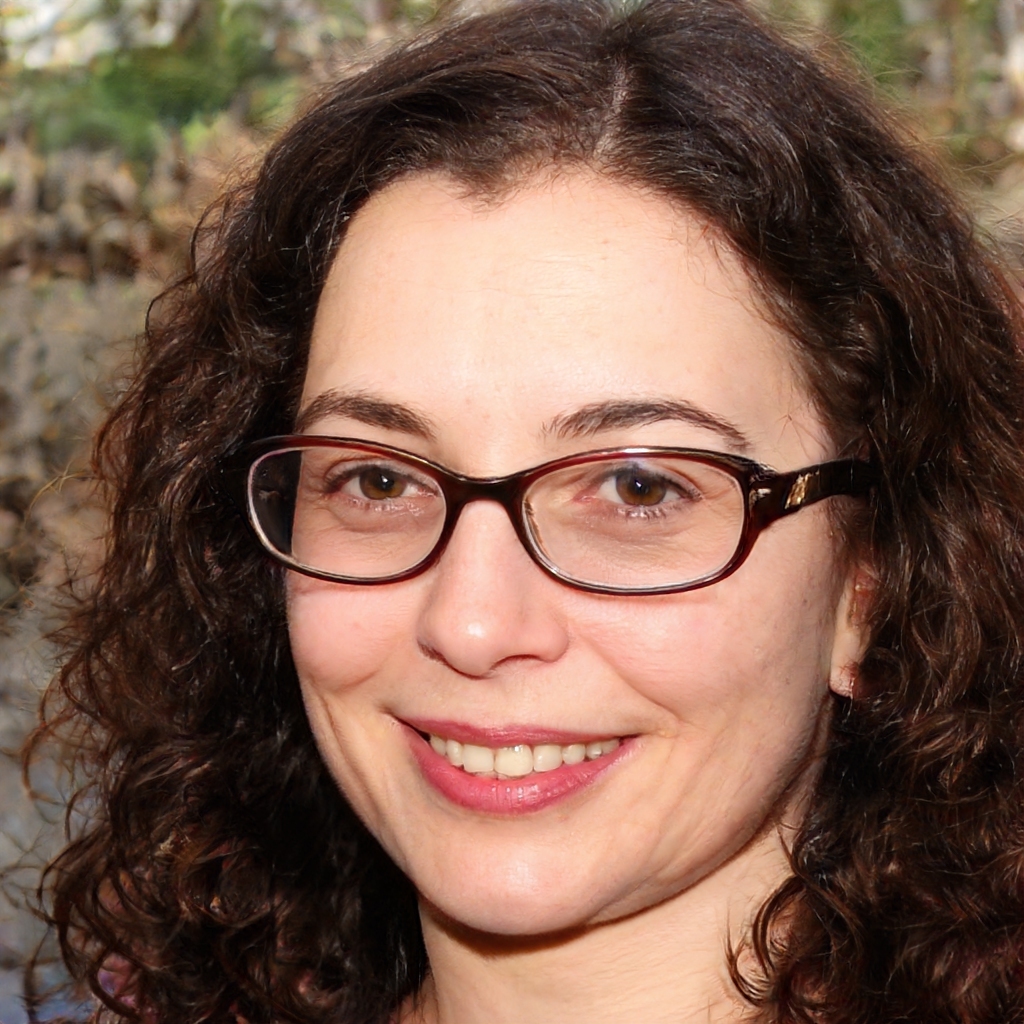
Mother of three and a primary school teacher. I’ve always loved being around children and helping them, so I chose my path as a teacher. It is sometimes hectic with three children, but I am 100 percent into it and wouldn’t change it for anything in the world.

